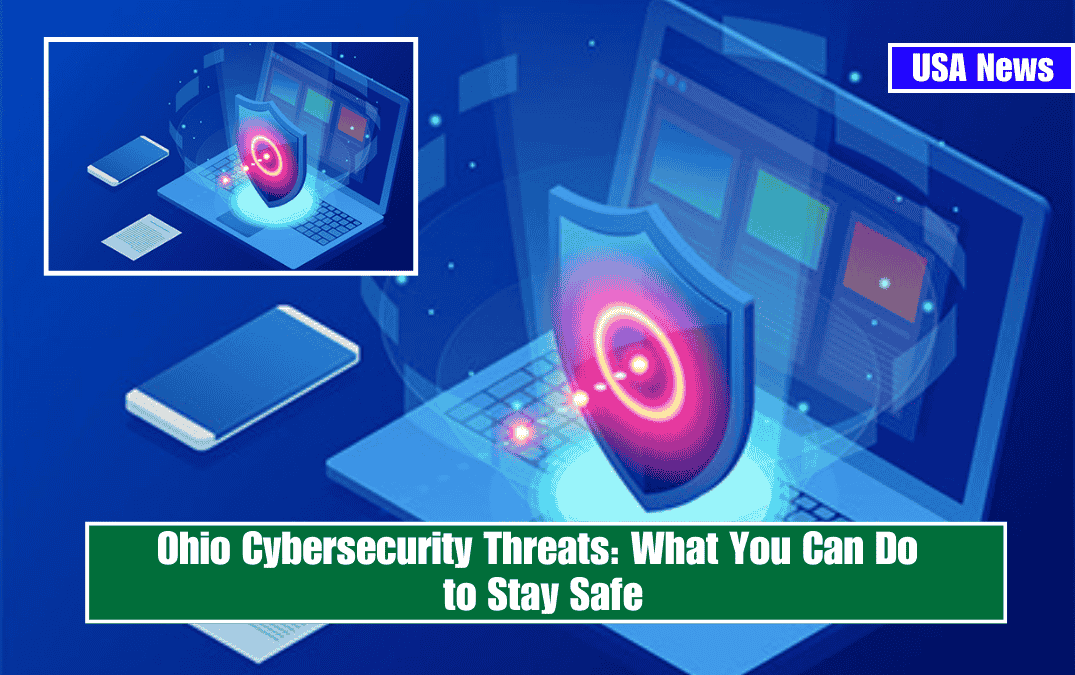In 2025, Ohio faces a growing number of cybersecurity threats, ranging from ransomware attacks on local governments to phishing scams targeting individuals and businesses. With the digital landscape becoming increasingly interconnected, protecting personal and organizational data is more critical than ever. Here’s an overview of the threats Ohioans face and actionable steps to stay safe.
Cybersecurity Threats in Ohio
Ohio has been a target for various cyberattacks, including ransomware, phishing, and malware. For example:
- Ransomware Attacks: Local governments in Ohio have been frequent targets. A notable case involved a Russia-affiliated group breaching Columbus’ network, stealing sensitive data, and demanding ransom.
- Phishing Scams: Phishing remains one of the most effective attack methods, tricking individuals into revealing sensitive information through fraudulent emails or websites.
- Critical Infrastructure Risks: Water and wastewater treatment facilities are particularly vulnerable due to their reliance on internet-connected systems. Cyber Ohio has been working with agencies to improve their defenses.
- Small Business Vulnerabilities: Nearly 43% of cyberattacks target small businesses, many of which lack adequate cybersecurity measures.
Steps to Stay Safe
Whether you’re an individual, business owner, or government entity, adopting proactive cybersecurity practices is essential. Here are some key strategies:
1. Strengthen Passwords
Use long, unique passwords or passphrases for all accounts. Consider using a password manager to generate and store complex passwords securely.
2. Enable Multi-Factor Authentication (MFA)
Adding an extra layer of security through MFA can significantly reduce the risk of unauthorized access, even if your password is compromised.
3. Update Software Regularly
Ensure that all devices and systems are running the latest software versions. Updates often include patches for vulnerabilities that hackers exploit.
4. Be Cautious with Emails and Links
Avoid clicking on suspicious links or downloading unexpected attachments. Verify the sender’s email address and be wary of messages that appear urgent or too good to be true.
5. Back Up Data
Regularly back up important files and store them securely offline or in immutable cloud storage. This ensures you can recover your data in case of a ransomware attack.
6. Secure Your Network
Use strong encryption for your home Wi-Fi network and consider installing firewalls to monitor incoming and outgoing traffic.
7. Protect Mobile Devices
Turn off unnecessary features like Bluetooth when not in use, use app stores for downloads, and review app permissions carefully to avoid exposing sensitive data.
8. Educate Yourself and Others
Participate in cybersecurity awareness programs like those offered by Cyber Ohio or local organizations. Small businesses can take advantage of resources provided by initiatives such as the Ohio Secretary of State’s cybersecurity program.
Ohio’s Cybersecurity Initiatives
Ohio has implemented several measures to combat cyber threats:
- The Ohio Cyber Integration Center provides 24/7 support for local governments experiencing cyber incidents.
- The state’s Persistent Cybersecurity Improvement Initiative offers training programs to help organizations strengthen their defenses.
- Grants are available for migrating to secure domains (e.g., .gov) and acquiring advanced cybersecurity tools.
- Programs like the “Are You Cyber Safe?” conference educate small businesses about protecting themselves from cybercrime.
Cybersecurity threats in Ohio are evolving rapidly, but staying informed and adopting best practices can significantly reduce risks. By strengthening passwords, enabling MFA, updating software, and leveraging state resources like Cyber Ohio, individuals and organizations can better protect themselves against cyberattacks.
In today’s digital world, proactive measures are no longer optional—they’re essential for safeguarding personal data and critical infrastructure alike.
SOURCES:-
[1] https://dam.assets.ohio.gov/image/upload/q_auto/fl_attachment/cyber.ohio.gov/OCCP/2025_Ohio_Comprehensive_Cybersecurity_Plan-Final_-PublicVersion.pdf
[2] https://www.cshub.com/attacks/articles/cyber-attacks-data-breaches-march-2025
[3] https://ure.com/news-releases/4-ways-to-stay-cyber-safe/
[4] https://techxplore.com/news/2025-02-cyberattack-states.html
[5] https://louisvillegeek.com/news/5-common-cyber-security-threats-in-2025-and-how-to-stay-safe/















